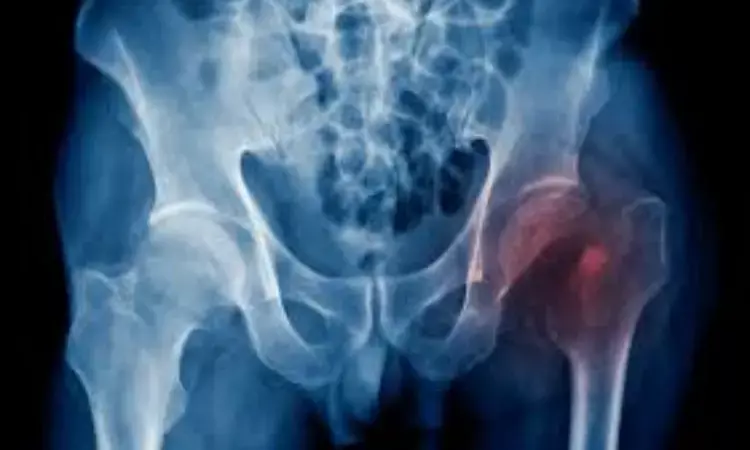- Home
- Medical news & Guidelines
- Anesthesiology
- Cardiology and CTVS
- Critical Care
- Dentistry
- Dermatology
- Diabetes and Endocrinology
- ENT
- Gastroenterology
- Medicine
- Nephrology
- Neurology
- Obstretics-Gynaecology
- Oncology
- Ophthalmology
- Orthopaedics
- Pediatrics-Neonatology
- Psychiatry
- Pulmonology
- Radiology
- Surgery
- Urology
- Laboratory Medicine
- Diet
- Nursing
- Paramedical
- Physiotherapy
- Health news
- Fact Check
- Bone Health Fact Check
- Brain Health Fact Check
- Cancer Related Fact Check
- Child Care Fact Check
- Dental and oral health fact check
- Diabetes and metabolic health fact check
- Diet and Nutrition Fact Check
- Eye and ENT Care Fact Check
- Fitness fact check
- Gut health fact check
- Heart health fact check
- Kidney health fact check
- Medical education fact check
- Men's health fact check
- Respiratory fact check
- Skin and hair care fact check
- Vaccine and Immunization fact check
- Women's health fact check
- AYUSH
- State News
- Andaman and Nicobar Islands
- Andhra Pradesh
- Arunachal Pradesh
- Assam
- Bihar
- Chandigarh
- Chattisgarh
- Dadra and Nagar Haveli
- Daman and Diu
- Delhi
- Goa
- Gujarat
- Haryana
- Himachal Pradesh
- Jammu & Kashmir
- Jharkhand
- Karnataka
- Kerala
- Ladakh
- Lakshadweep
- Madhya Pradesh
- Maharashtra
- Manipur
- Meghalaya
- Mizoram
- Nagaland
- Odisha
- Puducherry
- Punjab
- Rajasthan
- Sikkim
- Tamil Nadu
- Telangana
- Tripura
- Uttar Pradesh
- Uttrakhand
- West Bengal
- Medical Education
- Industry
Increased fasting blood sugar variability risk factor for osteoporotic fractures

China: Increased fasting plasma glucose (FPG) variability is a risk factor for incident osteoporotic fractures in people older than 50 years old, diabetes patients, nonobese individuals, and individuals with positive FPG-SD variability, a recent study published in Frontiers in Endocrinology has shown.
Accumulating evidence has shown that diabetes raises the risk of osteoporotic fractures. In addition to FPG levels, FPG variability is associated with osteoporotic fractures. However, most relevant studies have focused on the diabetic population, and only one Korean study has explored the relationship between FPG variability and osteoporotic fractures in nondiabetic people over 50 years old. However, there are no studies on the impact of community-wide FPG variability on osteoporotic fractures.
Against the above background, Ri Liu, Department of HandSurgery, Third Hospital of Hebei Medical University, Shijiazhuang, Hebei, China, and colleagues investigate the impact of FPG variability on osteoporotic fractures in the entire community population to facilitate early detection and intervention, reduce the public health burden, and reduce the incidence of osteoporotic fractures.
Participants were from the Kailuan Study. They completed three consecutive surveys from 2006-2007, 2008-2009, and 2010-2011. Individuals with an osteoporotic fracture in or before the index year and those without complete FPG records at the first 3 examinations were excluded.
All participants were followed from the date of the third examination to the first occurrence of an endpoint event. 57295 included participants were divided into three groups according to the SD of FPG levels. For further analysis of the effects of different FPG-SD groups on osteoporotic fracture risk, a Cox proportional hazards model was performed.
The study led to the following findings:
- During a median follow-up time of 11.00 years, 772 new osteoporotic fracture cases were documented.
- When evaluating the FPG-SD level as a categorical variable, the HRs for osteoporotic fractures were 1.07 for T2 and 1.32 for T3 when compared with T1.
- Increased FPG variability was associated with a greater risk of osteoporotic fractures in people with diabetes than in those without diabetes (47% versus 32%).
"Our study provides the first report on the effect of FPG variability on the risk of osteoporotic fracture in the entire community population," the researchers wrote. "We found that increased FPG variability was an independent predictor of incident osteoporotic fracture, particularly in individuals older than 50 years old, diabetes patients, nonobese individuals, and individuals with positive FPG-SD variability."
Reference:
Liu, Ri, et al. "The Impact of Fasting Plasma Glucose Variability On Osteoporotic Fractures." Frontiers in Endocrinology, vol. 14, 2023, p. 1187682.
Dr Kamal Kant Kohli-MBBS, DTCD- a chest specialist with more than 30 years of practice and a flair for writing clinical articles, Dr Kamal Kant Kohli joined Medical Dialogues as a Chief Editor of Medical News. Besides writing articles, as an editor, he proofreads and verifies all the medical content published on Medical Dialogues including those coming from journals, studies,medical conferences,guidelines etc. Email: drkohli@medicaldialogues.in. Contact no. 011-43720751


